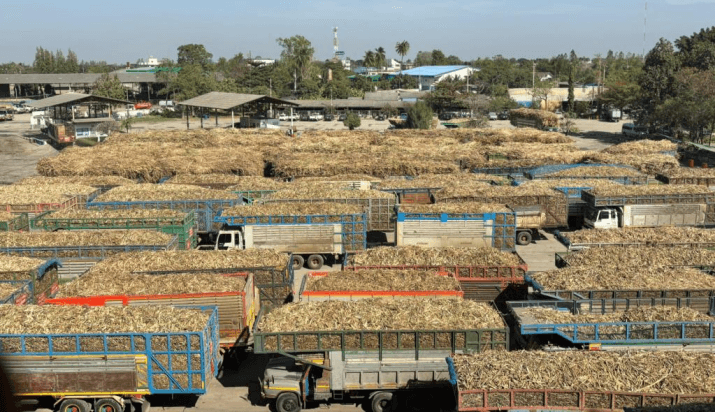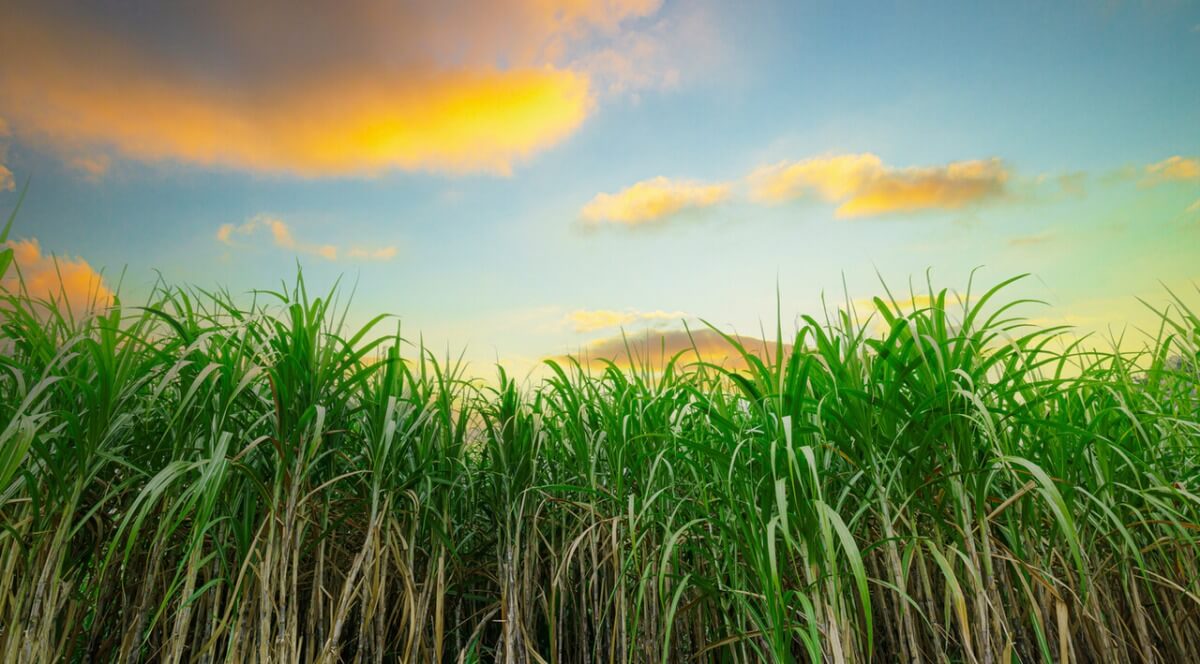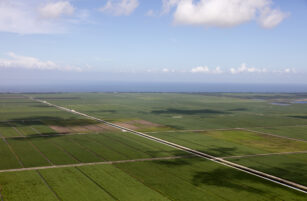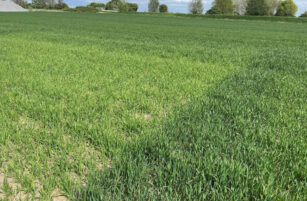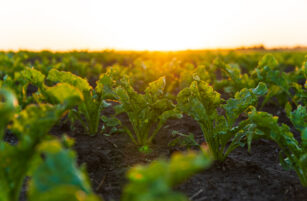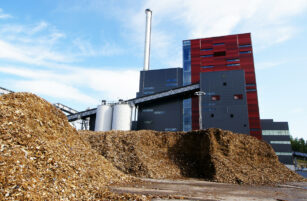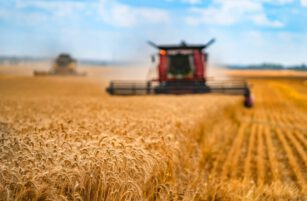Insight Focus
We think Thailand will harvest 105-110 million tonnes of cane in 2025/26. Thailand’s 2024/25 cane crush was 92.2 million tonnes. The increase is dependent on better weather in the middle of the year.
2025/26 Thailand Cane Crop Forecast
We expect Thailand to harvest around 105–110 million tonnes of sugarcane in the 2025/26 crop season. This would be a 14-19% increase on last year’s 92.2 million tonnes.
We think that part of the increase will come from growth in Thai cane area, of around 3%. Sugarcane prices have remained strong in 2024, while cassava prices are at their lowest level in years. This means more cassava farmers may switch into cane.
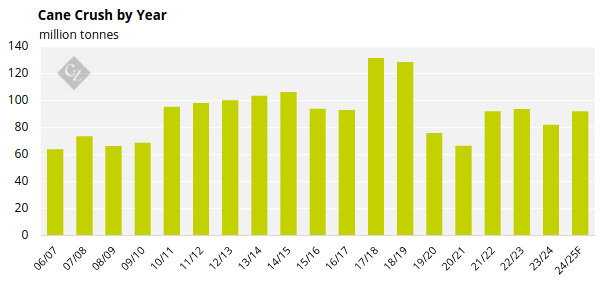
The remainder of the increase we forecast should come from better cane yields. The Thai Meteorological Department forecasts improved rainfall in 2025 compared to 2024, which is positive. However, rainfall in January to March 2025 has been below average.
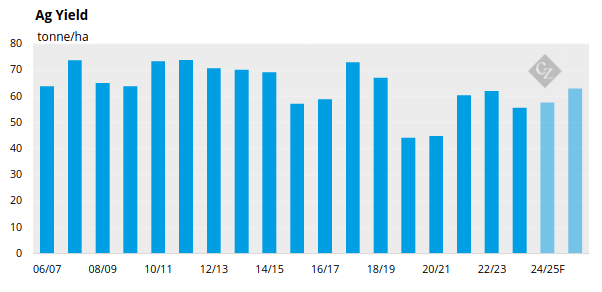
This isn’t necessarily a problem, as January to March is the dry season, but it does mean that the rainy season in the middle of the year (which coincides with cane’s grand growth phase) is critical for plant maturity. Any shortfalls in precipitation could mean our yield forecast is too optimistic. We will monitor the weather closely!
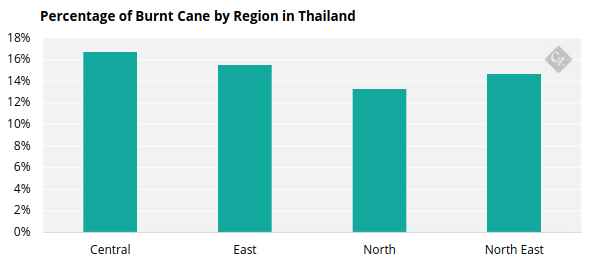
We also note that Thai government restrictions on the percentage of brunt cane that mills are able to accept slowed cane throughput in 2024/25. This didn’t help mill performance. The 25% limit on burnt cane deliveries could still be in place in 2025/26, which could also be negative for the outlook.
Drought Cuts 2024/25 Thai Cane Yields
In 2024/25, 92.2 million tonnes of cane was crushed in Thailand. This was below our initial estimate of 110 million tonnes.
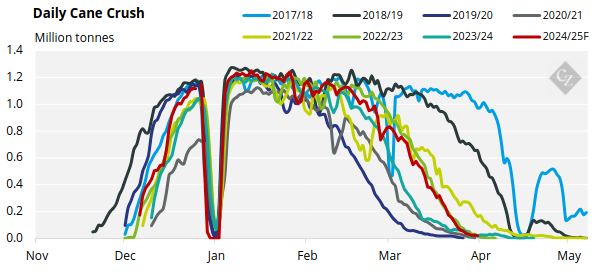
We made our initial estimate based on multiple crop tours to the cane regions, which showed an increase in harvested area and healthy cane.
We observed that sugarcane had surpassed both rice in lowland areas and cassava in upland regions. This was particularly evident in the upper Northeast, where land that was previously used for cassava and rice was being converted to sugarcane. With supportive weather conditions, early signs of crop development were strong.
However, the season turned out to be more challenging than we’d expected. The drought in the first quarter of 2024 was more severe than we’d realised and impacted cane growth at a crucial stage. Thailand received about 1,690 millimetres of rain during the year, which is close to normal, but most of the rain came later than usual. Between May and September, the rainfall was also unevenly distributed, which slowed crop growth and resulted in lower yields.

We suspect that some farmers, faced with erratic rainfall, opted to uproot their failing cane and replant with other crops.
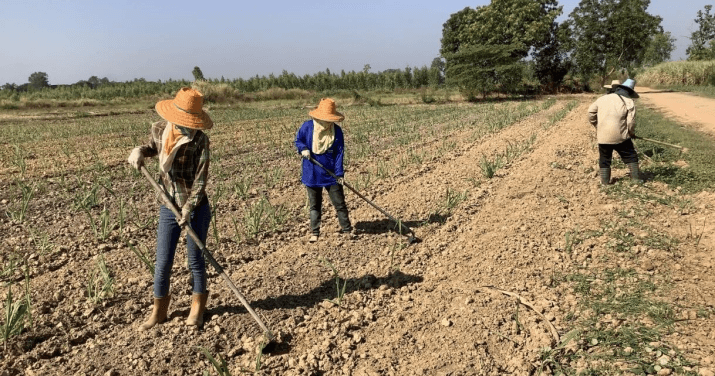
Burn Limits Delay Harvest
Additionally, during the cane crush the government limited burnt cane arrivals at the mills to 25% of daily deliveries. This made it difficult for some mills to schedule their cane arrivals, leading to longer than normal wait times to process the harvested cane. This led to a decline in cane quality.
